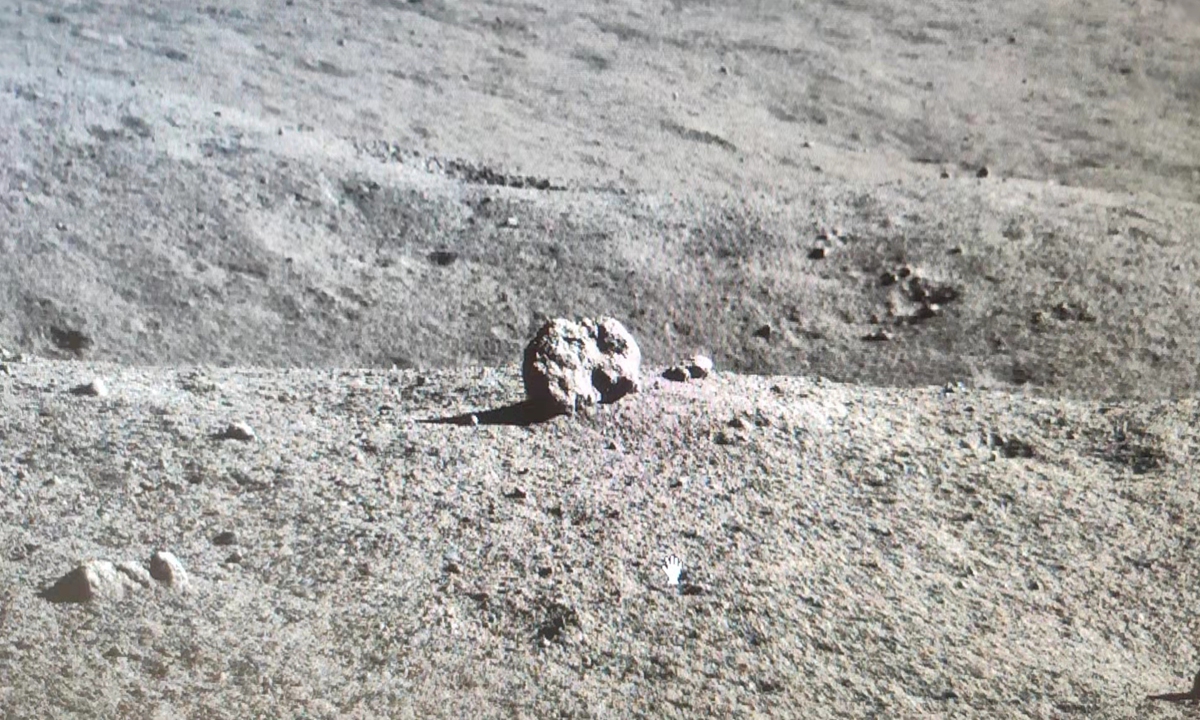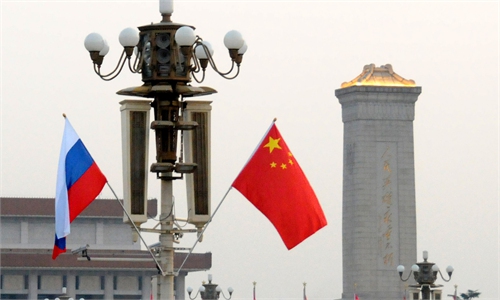SCI-TECH / AIR & SPACE
Chang'e-5 in-situ data proves presence of water on moon

Picture of the cube-shaped "mystery hut" taken by Yutu-2 rover. Photo: Courtesy of Beijing Aerospace Control Center
Data acquired by the lander of China's Chang'e-5 lunar probe has provided the first-ever evidence of the in-situ detection of water on the moon, indicating that there is as much as 120 parts per million of water (as hydroxyl and/or H2O) in the lunar regolith. Space analysts said Sunday that this fresh discovery of a key resource on the moon is great news for humanity's endeavor to build and operate research stations and even migration to Mars.
A joint research team led by Lin Yangting and Lin Honglei from the Institute of Geology and Geophysics of the Chinese Academy of Sciences made observations of the water signals in reflectance spectral data from the lunar surface collected by the Chang'e-5 lander, and their study was published in Science Advances, a peer-reviewed multidisciplinary open-access scientific journal run by the American Association for the Advancement of Science, on Saturday.
Scientists said in the published work that water on the moon "is mostly attributed to solar wind implantation."
Before this, many orbital observations and sample measurements completed over the past decade have found evidence of the presence of water (as hydroxyl and/or H2O) on the moon. However, no in-situ measurements were previously conducted on the lunar surface. The Chang'e in-situ measurement filled this gap.
Song Zhongping, a space analyst and TV commentator, told the Global Times the existence of water could support human survival on the moon and help generate fuel for spacecraft such as rockets.
That would mean the moon's resources could facilitate humanity's exploration of deeper space. The moon could also be a great springboard for human migration to Mars, Song pointed out.
Carrying some two kilograms of lunar samples, China's Chang'e-5 safely landed at a designated landing site in Siziwang Banner of North China's Inner Mongolia Autonomous Region on December 17, 2020, marking a full victory for the first lunar sample return mission since the Soviet Union's Luna 24 mission in 1976.
Lin said that the Chang'e-6 and -7 missions will continue to search for water on the moon, and their studies would lay the ground for future missions' scientific goals.
Wu Yanhua, a deputy administrator with the China National Space Administration (CNSA), recently disclosed that state authorities have approved the fourth phase of China's lunar missions, which will include new Chang'e-6, -7 and -8 missions, which are expected to be carried out in the next decade.
China plans to launch the Chang'e-7 probe to the lunar South Pole first, which will be followed by the Chang'e-6 for a sampling and return mission from the lunar South Pole.
Chang'e-8, the last piece of the fourth phase, will construct a primary form of the International Lunar Research Station.
Meanwhile, the Global Times learned from the CNSA that the Chang'e-4's rover Yutu-2 had trekked more than 1,000 meters on the moon's surface as of Thursday.
According to mission insiders, the cube-shaped "mystery hut" on the far side of the moon the rover spotted last month has turned out to be a rabbit-like rock. On the 38th moon day of the moon expedition, Yutu-2 advanced right toward the rock to see it up close.
After getting closer and getting some perspective, and with the guidance of the ground supporting team, the rover was able to reveal the object's true nature with the full-color camera onboard.
The Yutu-2 and Chang'e-4 lander took pictures of each other on January 11, 2019, marking the full success of the mission, and the latest stage of the rover took place just before the third anniversary of that epic feat.
Many netizens commented online that it was such a sweet and romantic moment, that China's "jade rabbit" rover could finally meet its mate on the moon.


